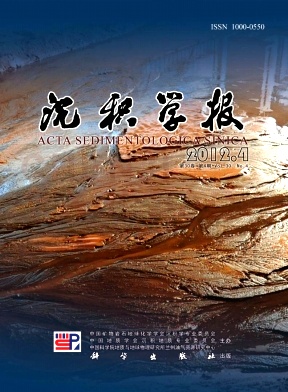Geochemical Significance of the Saturated Hydrocarbons of Limnological Sediments from Ruoergai Plateau
- Publish Date: 2012-08-10
-
Key words:
- Ruoergai Plateau /
- limnological sediments
Abstract: Biomarker nalkanes have been demonstrated as a useful tool in paleolimnological reconstruction since different types of plants have distinctive carbon chain lengths of nalkanes. Peat deposits from Ruoergai Plateau are excellent archives for Holocene paleoenvironmental records. For example, Hong et al.(2003) successfully reconstructed paleoclimatic changes over the last 12 ka based on δ13C series of both Carex mulieensis (Carex m.) remains cellulose and peat cellulose from Hongyuan peat sequence. Zheng et al. (2007a) and Yamamoto et al. (2010) investigated the lipid compositions and nalkane δ13C values of another Hongyuan peat profile over the 13 ka, respectively. However, Holocene paleoenvironmental information has been not obtained from lacustrine sediments there. Therefore, there is a need for additional records of environmental change to improve the accuracy of organic geochemical tools in paleoecological reconstruction. In this work, we carry out preliminary research on the saturated hydrocarbons of a 346cmlong limnological profile from Northern Ruoergai Plateau by gas chromatography and mass spectrometry (GCMS), together with 14C dating, lithology and total organic carbon content (TOC) to evaluate the paleoenvironmental information of molecular fossil compositions and their parameters to organic sources, microbial activity and paleoclimate changes. The nalkanes (C16~C35) dominated by the middlelong chain homologues and high OEP1 and OEP2 values indicate that the organic matter of the sedimentary section are mainly derived from higher plants, especially herbaceous plants. Lithology, TOC and pristane/phytane (Pr/Ph) ratios indicate the basin sedimentary evolution process from strong reducing deep lake conditions in the early Holocene (ca. 11.3~7.3 cal ka BP, 346~203cm) to weak reducing swamp environments during the midHolocene (ca. 7.3~4.5 cal ka BP, >203cm). In the sedimentary period, variations in the proportions of algal, landplant, and aquatic macrophyte inputs of organic matter delivered to the sedimentary profile is well recorded through four nalkanes proxies including middlechain and longchain odd over even carbon number predominance (OEP1 and OEP2, respectively), C25/C31 and ∑C21-/∑C22+ nalkane ratios. In particularly, there is likely important input of Sphagnum to the organic matter in the 120cm depth upwards resulting in the exceptional distribution of these above proxies. In the same sedimentary period, there also is relatively strong microbial degradation resulting to alter the nalkane compositions. Furthermore, the records of the section confirm that Ruoergai Plateau have apparent climatic instability during the period from 9.8 to 8.6 cal ka BP. Of course, there is a clear need to do more work not only on the profile but also on modern vegetation lipid compositions from Ruoergai Plateau in the future exploitation of molecular proxies as tools for the generation of palaeoenvironmental information from the wealth of limnological profiles available.
| Citation: | Geochemical Significance of the Saturated Hydrocarbons of Limnological Sediments from Ruoergai Plateau [J]. Acta Sedimentologica Sinica, 2012, 30(4): 755-760. |






 DownLoad:
DownLoad: